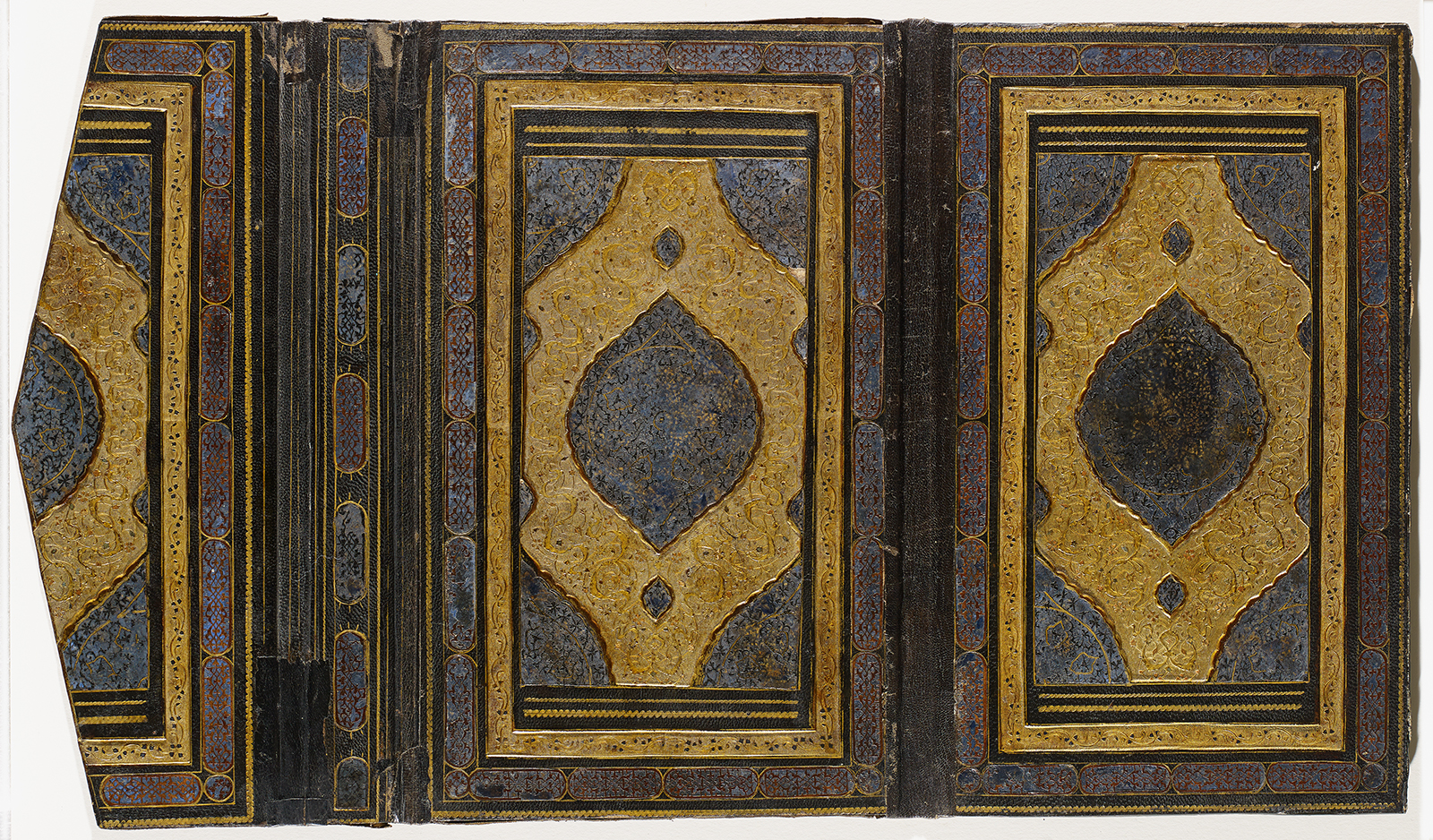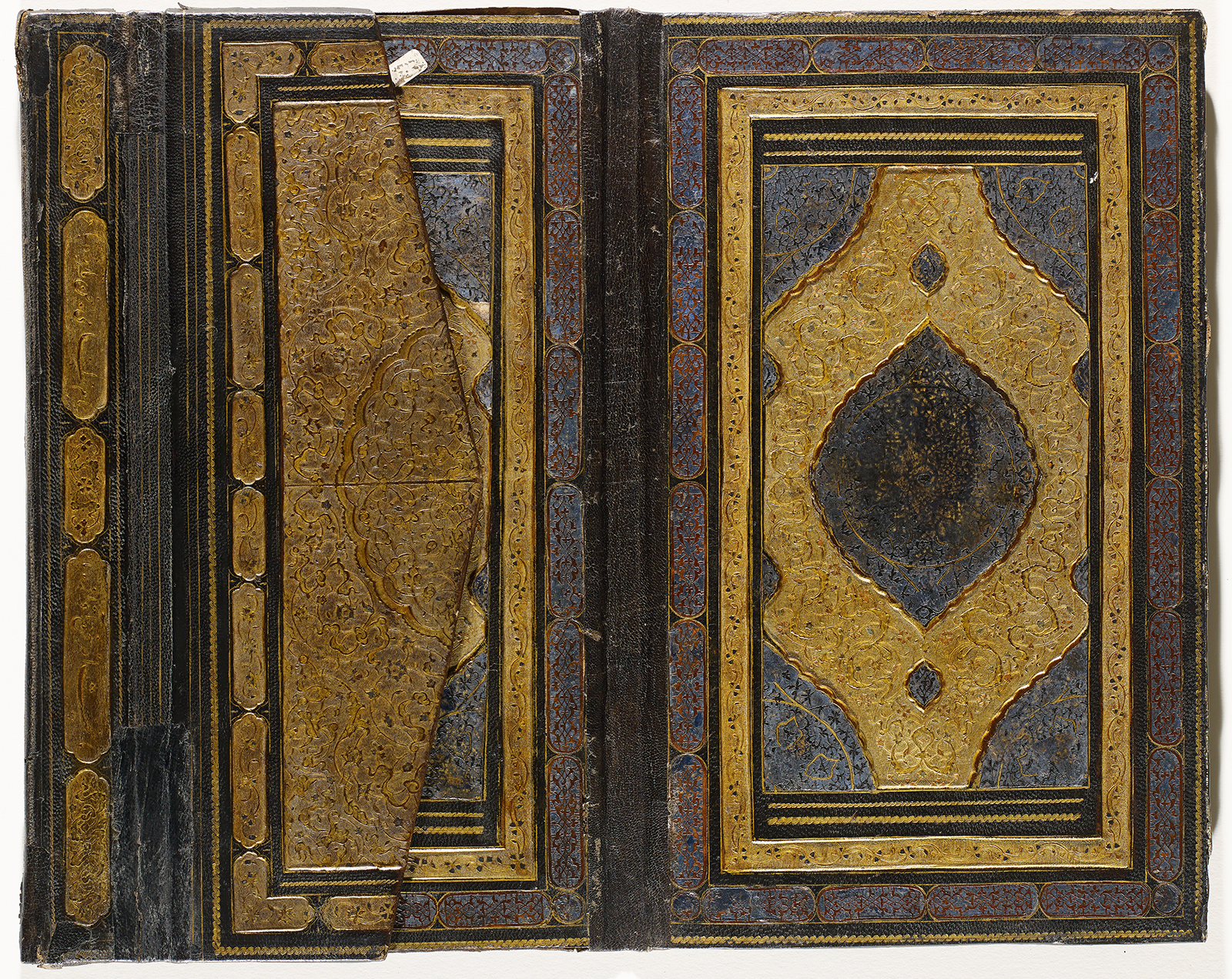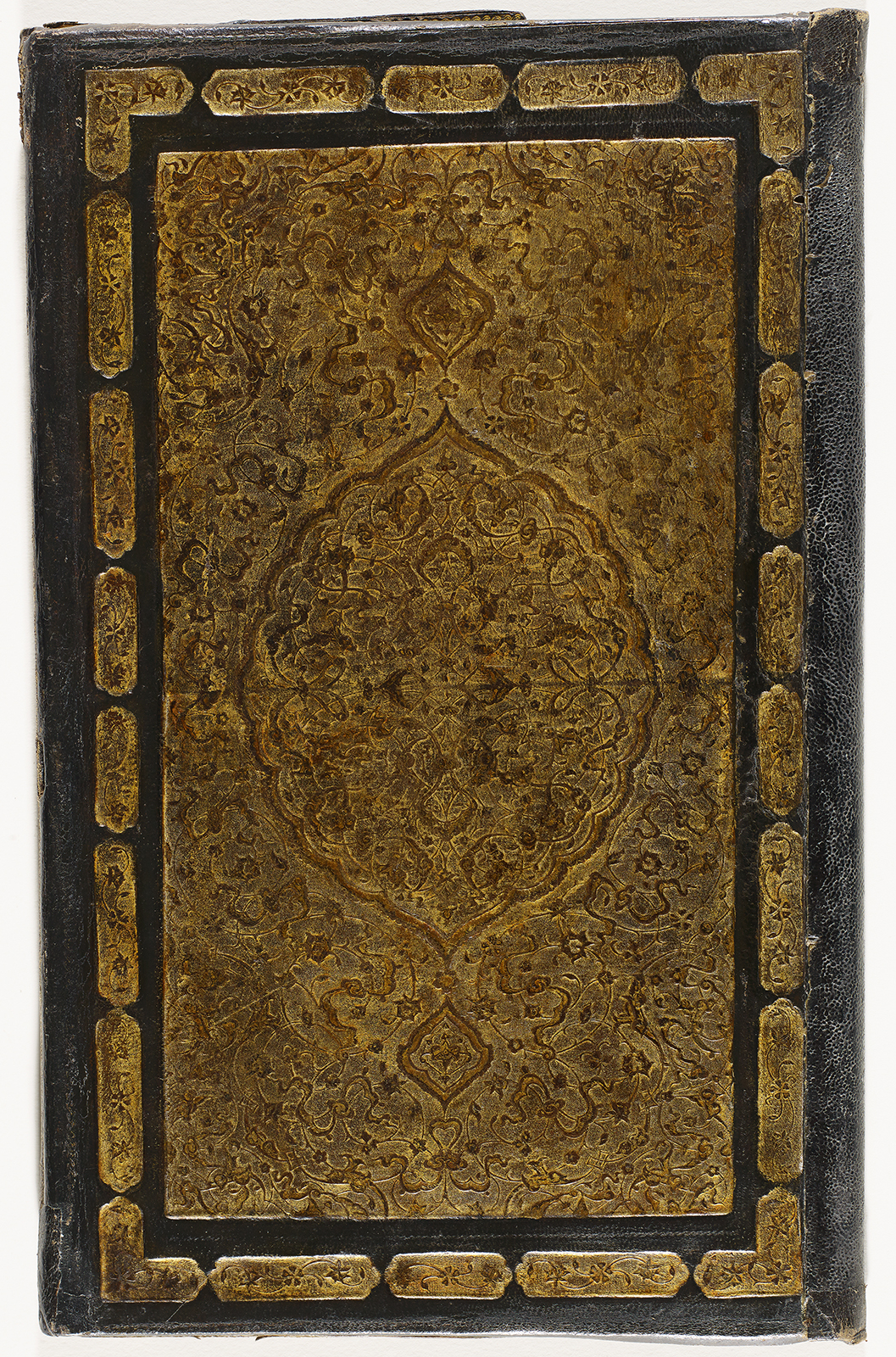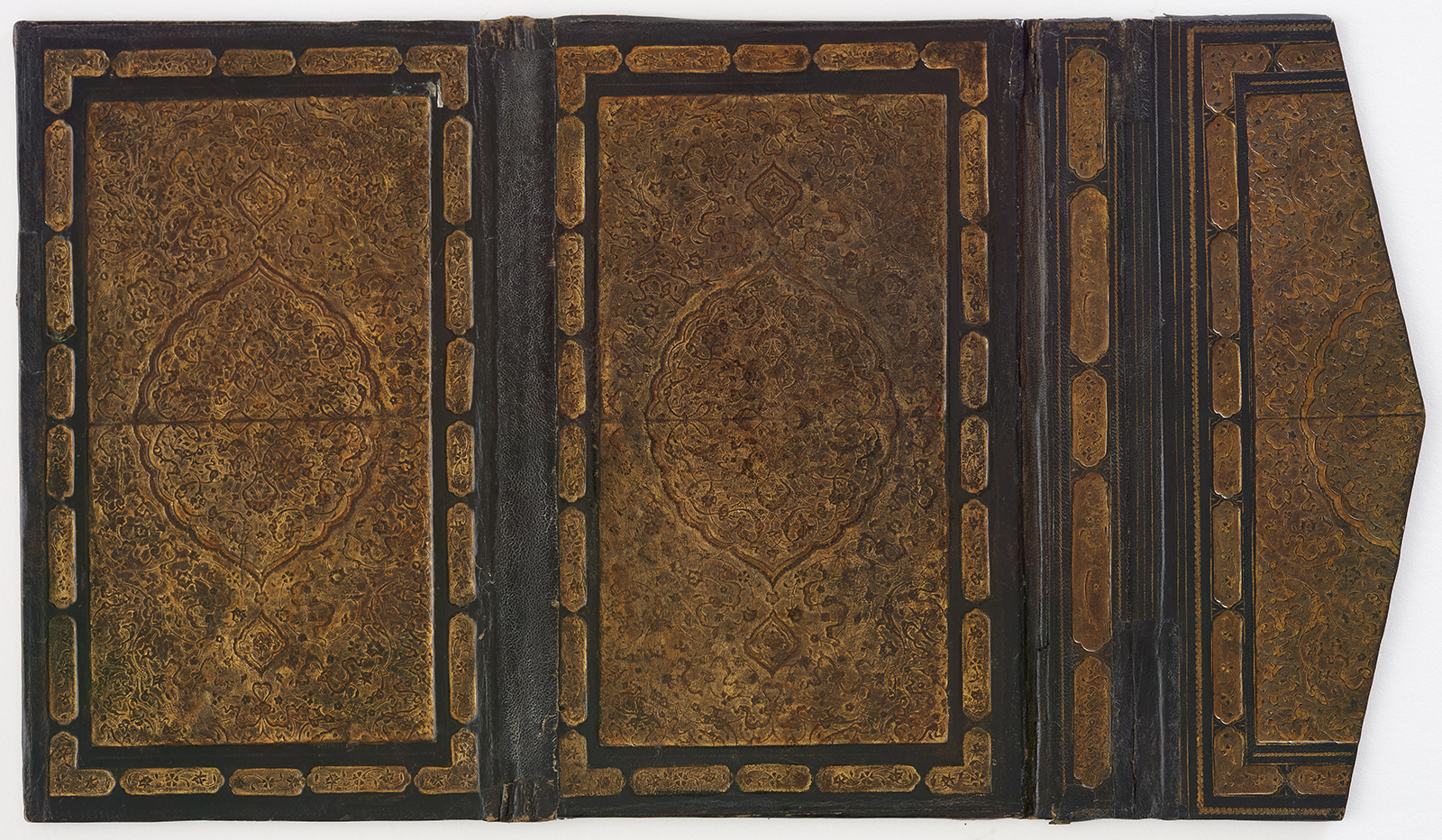Click on the image to zoom
Binding, outer covers and doublures: upper, lower, and flap
- Accession Number:AKM384
- Place:Iran
- Dimensions:31.2 cm × 18.8 cm
- Date:ca. 1550
- Materials and Technique:Dark chestnut-coloured leather, pasteboard, gold, lapis blue paint
Durable yet easily decorated, leather presented an ideal material for protecting Islamic manuscripts. Some particularly fine bindings executed in the 15th century even featured different designs on the upper and lower covers.[1] Delicate leather filigree was often reserved for inner covers (doublures), where it would be less susceptible to damage
Further Reading
The binding is thought to have belonged to a literary work and must have been produced in Shiraz during the Safavid period (1501–1722). Similar decoration is found on the covers of an illustrated Shahnameh (Book of Kings) whose verse—originally completed by Firdausi ca. 1010—was copied by Murshid al-katib al-Shirazi in Dhu’l-Hijja 945 (May 1539), likely in Shiraz.[2]
In the central field of each outer cover is a large medallion with pendants. Both the inside of the medallion and the space around it are filled with a two-tier design of floral scrollwork overlaid by disconnected cloud motifs tied like ribbons. Close examination of the corners of the cover reveals that the binder designed a cornerpiece here, as indicated by a slender curving band with knot and large rumi motifs (whose bulbous bodies with pointed ends resemble stylized leaves). There are flowers inside cartouches around the border. The short cartouches on the fore-edge flap are adorned with flowers and cloud bands.
Inside two long cartouches on the fore-edge flap can be found a Persian couplet in a taliq hand. This couplet is by the Iranian poet Nizami (1141–1209) taken from the Makhzan al-asrar, which forms the first part of Nizami’s Khamseh:
Ta sukhanest az sukhan avazeh bad/Nam-i Nizami be-sukhan tazeh bad
(May the fame of the word spread so long as it exists / Let the name of Nizami berefreshed by the word)
These lines suggest that the binding once protected a manuscript of Nizami’s Khamseh.
In the central field of the doublures is a medallion with pendants and cornerpieces decorated with dark chestnut-coloured leather filigree. The filigree decoration resembles that of the binding for another manuscript of Nizami’s Khamseh in the Aga Khan Museum Collection (AKM383). The area between the medallion and cornerpieces is slightly concave and decorated with stamped designs of scrolling branches and flowers—still bearing traces of pink and blue paint—overlaid by cloud motifs. Inside the broad border are cartouches decorated with light chestnut-coloured leather filigree.
- Zeren Tanındı
Notes
[1] Oktay Aslanapa, “The Art of Bookbinding,” figs. 38, 48, 51; Julian Raby and Zeren Tanındı, Turkish Book Binding in the 15th Century. The Foundation of an Ottoman Court Style, 106–25, cat. 1–4.
[2] Ernst J. Grube, Islamic Paintings From the 11th to the 18th Century in the Collection of Hans P. Kraus, 141, cat. 114–21. The cover design of a Qur’an dated Shaban 959 (July–August 1552) with a royal binding is similar to that of AKM384. See Thompson and Canby, eds., Hunt for Paradise. Court Arts of Safavid Iran 1501–1576, 174–77.
References
Aslanapa, Oktay. “The Art of Bookbinding.” The Arts of the Book in Central Asia, 14th–16th Centuries, ed. Basil Gray. Paris and London: UNESCO/Serindia Publications, 1979, 59–92. ISBN: 9780877731658
Grube, Ernst J. Islamic Paintings From the 11th to the 18th Century in the Collection of Hans P. Kraus. New York: HP Kraus, 1970.
Raby, Julian and Zeren Tanındı. Turkish Book Binding in the 15th Century. The Foundation of an Ottoman Court Style. London: Azimuth editions on behalf of l'Association Internationale de Bibliophilie, 1993. ISBN: 9781898592013
Thompson, Jon and Sheila R. Canby, eds. Hunt for Paradise. Court Arts of Safavid Iran 1501–1576. Skira: Milan, 2003. ISBN: 9780878480937
Note: This online resource is reviewed and updated on an ongoing basis. We are committed to improving this information and will revise and update knowledge about this object as it becomes available.








